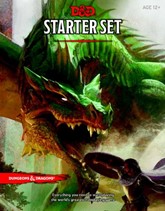 The fifth session of Lost Mine was a fairly short session, delayed as we waited for people to return from dinner, and it was spent entirely in the confines of Cragmaw Castle as the group went through two rather big battles that used a lot of the battlemat.
The fifth session of Lost Mine was a fairly short session, delayed as we waited for people to return from dinner, and it was spent entirely in the confines of Cragmaw Castle as the group went through two rather big battles that used a lot of the battlemat.
By the end of it, the party were rather hurt, but there were a lot of dead goblins, hobgoblins and weird creatures (like gricks). The big battle in the entranceway was pretty much as expected, with waves of reinforcements keeping things interesting (as well as the rockfall trap hitting some of the group as they attempted to attack the goblins from behind), but the players didn’t then push forward. Instead, they retreated and scouted around the keep some more, finding the locked side door and the concealed entrance as well!
Entering through the concealed way eventually led them to the chapel, where while they were fighting the gricks, some of the alerted goblins and hobgoblins came up behind them and made everything more difficult. It was great fun to run as the DM, and it was one those instances when playing on a battlemat made it a lot clearer to the players what was going on than Theatre of the Mind would have.
However, does that mean that I’ll pull out the miniatures for every combat? Not at all! These days, I use a number of different techniques to run combat, depending on what seems appropriate at the time. If the terrain is complicated or there’s a large number of monsters, miniatures are likely to come out. Complicated terrain doesn’t often mean lots of difficult terrain and pits with me, as it’s far more likely the terrain is complicated because of a number of avenues of approach.
One of the most interesting combat maps I ever ran was a labyrinth of five-foot-wide corridors in the Dungeon Magazine adventure Three Faces of Evil by Mike Mearls (the second part of the Age of Worms adventure path). People who have known me for a while will know how much I detest five-foot-wide corridors, but it worked in this instance because there were corridors leading everywhere! The party had attackers coming from every direction (and often through secret doors), so they never were quite sure which way they’d be attacked from. It’s that sort of feeling I got running the Cragmaw Castle section of Phandelver; waves of attackers, coming from many directions. Some of the goblins might leave through the side entrance and attack the players from behind! If you’re running the adventure, be alert for these opportunities.
Unfortunately, during the playing of the adventure we had the Curse of the Rogue Player afflict us again: a player who was so interested in what they were doing, they had no interest in seeing how it impacted the enjoyment of the other players. In this case, one of the characters was, instead of fighting the monsters that were giving the other players a hard time, he was running around and exploring other areas of the keep and alerting other monsters to the players’ presence.
This is a tricky situation to handle as a DM. Ultimately, if a player continues to act in this sort of manner, there’s little choice but to stop playing with them. However, it may be enough to just mention to the player how much his or her actions are disrupting play, and ask them to amend their behaviour. It wasn’t quite enough to suspend play to address it, but it’s something I’ll be looking at as the game continues.
So, that’s what happened in our fifth session. The sixth session should see the end of Cragmaw Castle and the adventure moving towards the endgame.
